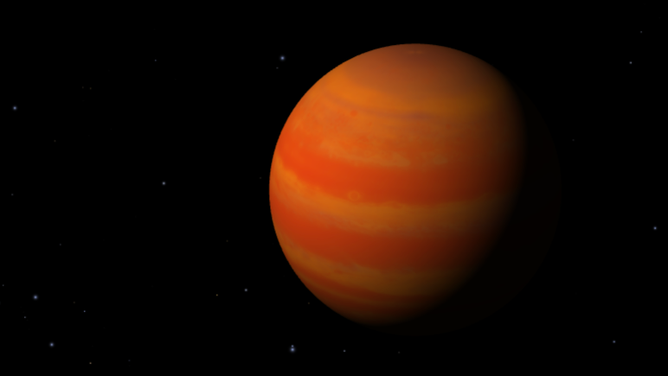Watch: ‘Massive cyclones’ on distant world form, dissipate in new video
Known as WASP-121 b, the exoplanet is a gas giant that has a radius that is more than 1.7 times that of Jupiter, NASA noted.
'Massive cyclones' on distant world form, dissipate in new video
A new video from the European Space Agency captures images of the atmosphere of an exoplanet, featuring cyclones being created and destroyed. (Courtesy: ESA via Storyful)
A new video shows cyclones churning within the atmosphere of WASP 121 b, an exoplanet nearly 900 light-years away from Earth, according to NASA.
Also known as Tylos, WASP-121 b is a gas giant that has a radius that is more than 1.7 times that of Jupiter, the agency noted.
Released by the European Space Agency, the video shows cyclones being created and destroyed in the atmosphere of WASP-121 b. The cyclonic movements appear in shades of lava orange, and the motions of which are similar to that of Van Gogh’s "A Starry Night" come to life.

Cyclones form on WASP-121 b.
(ESA via Storyful / FOX Weather)
"Here you can see massive cyclones being repeatedly created and destroyed on exoplanet WASP-121 b," the agency posted on X, formerly Twitter.
The ESA said scientists were able to determine the cyclones were being created and destroyed repeatedly due to the significant temperature difference between the side of WASP-121 b constantly facing its star and the dark side of the exoplanet.
ASTRONOMERS FIND 2 LIKELY ‘WATER WORLD’ EXOPLANETS
The video was created by processing observations taken by the NASA/ESA Hubble Space Telescope in 2016, 2018 and 2019, the ESA said. With this information, scientists were able to learn about the weather on WASP 121-b.
"The information that we extracted from those observations was used to characterise (infer the chemistry, temperature, and clouds) of the atmosphere of WASP-121 b at different times," said Quentin Changeat, an ESA Research Fellow at the Space Telescope Science Institute.

FILE: Artist's visualization of WASP-121 b.
(NASA / FOX Weather)
"This provided us with an exquisite picture of the planet, changing in time," he added.
Typically, learning about the weather on exoplanets is a challenge, as observations of exoplanets usually produce an averaged picture of the atmosphere, which scientists say is not an ideal way to study the weather.
However, given the longevity of Hubble’s observations, a clearer picture of the weather on exoplanets such as WASP-121 b is possible.
